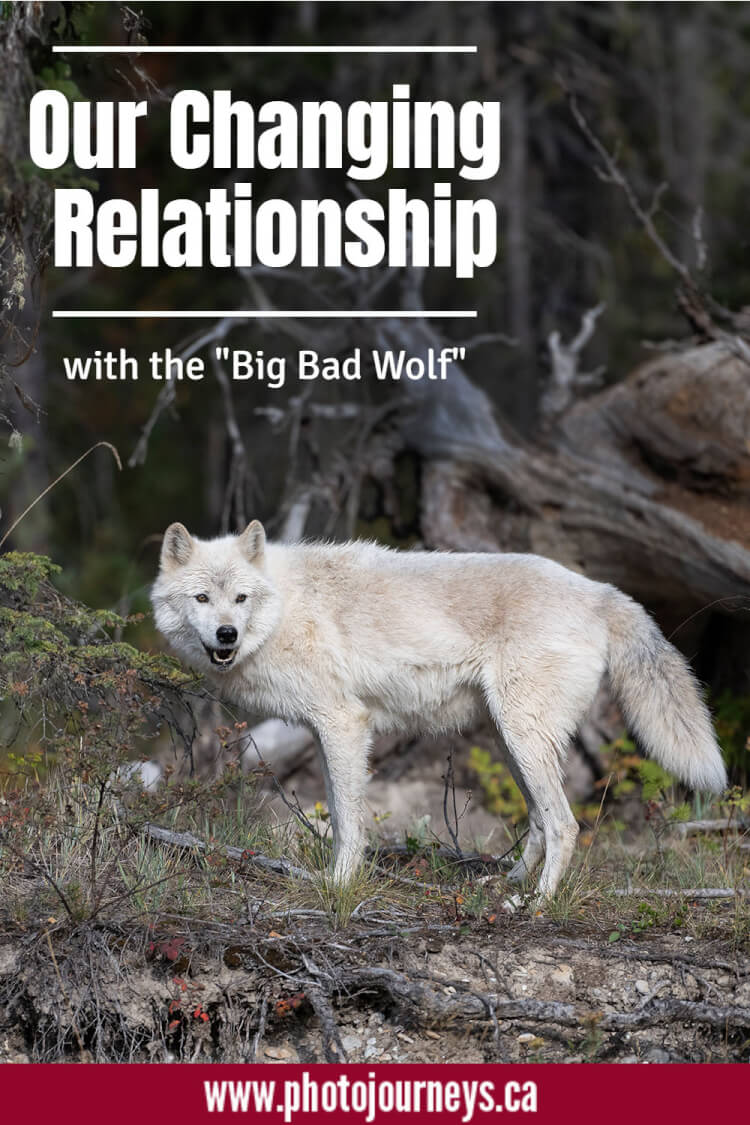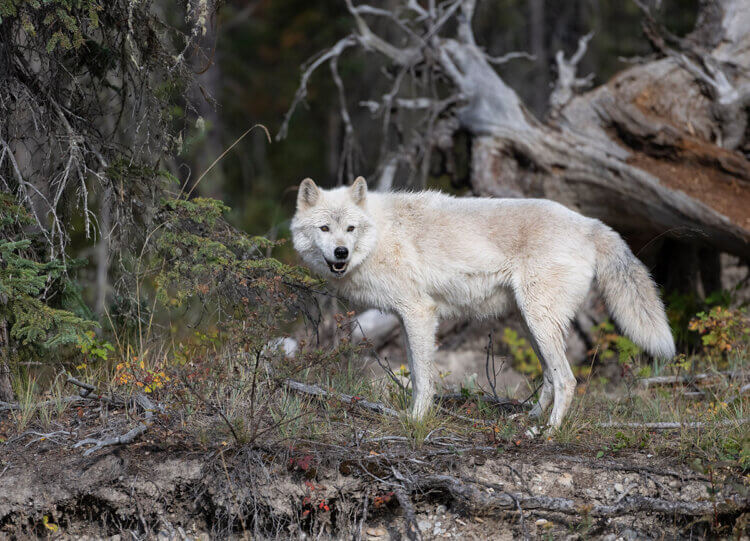
All photos © Robin and Arlene Karpan
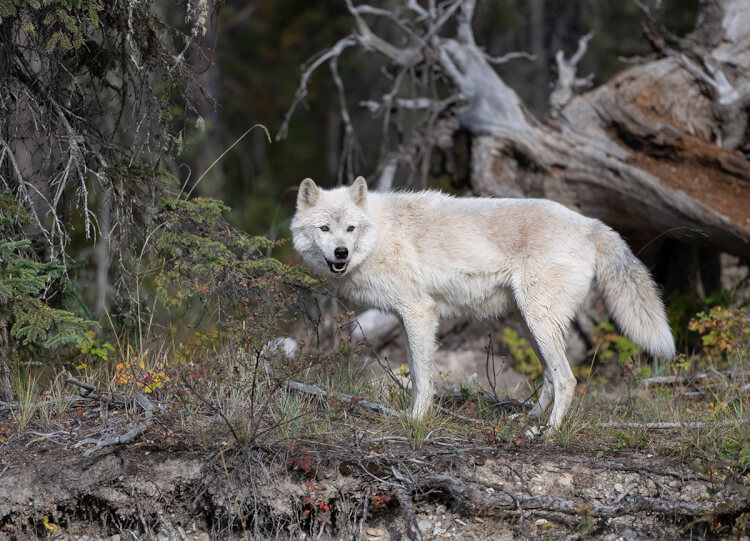
The early morning calm was suddenly broken by the haunting howl of wolves, that quintessential chorus of the wilderness sure to send shivers down your spine. It seemed a fitting welcome as we arrived at the Northern Lights Wolf Centre near Golden, BC, where we were about to go for a walk in the wilderness—with a wolf.
Centre owner and founder Shelley Black met us as we arrived. From the start, it was obvious how passionate she was about dispelling the myth of the big bad wolf. The centre’s role is to bring about a change in our relationship with this iconic predator and, in turn, our connection to the larger natural world.
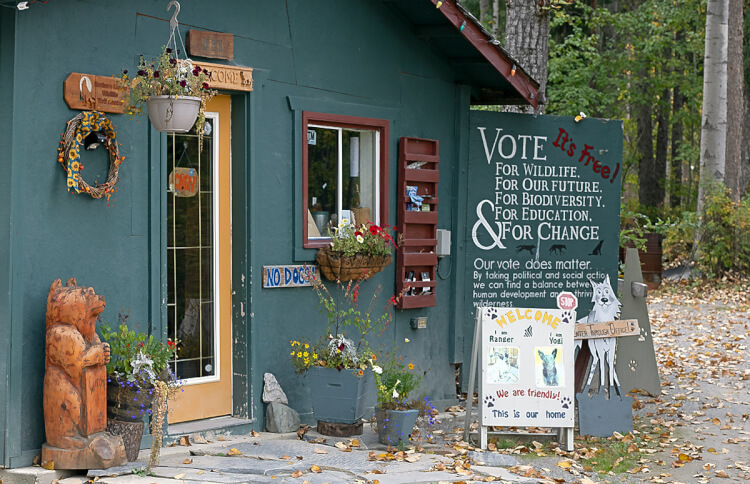
Wolves have long had a public relations problem. From childhood we’re taught that wolves are bad—just ask Little Red Riding Hood. Calling someone a wolf has nothing but negative connotations. Even our governments are quick to point the finger at wolves when something in the environment shifts out of balance.
The Wolf Centre Takes Shape
The wolf centre started with a different focus. Shelley’s ex-husband, Casey, was part of a team that trained animals for Hollywood movies. The Blacks adopted a wolf intending to pursue that business on their own. But movie star dreams soon faded and the centre took a different direction.
“I realized that public awareness and conservation were more important,” Shelley recalled.
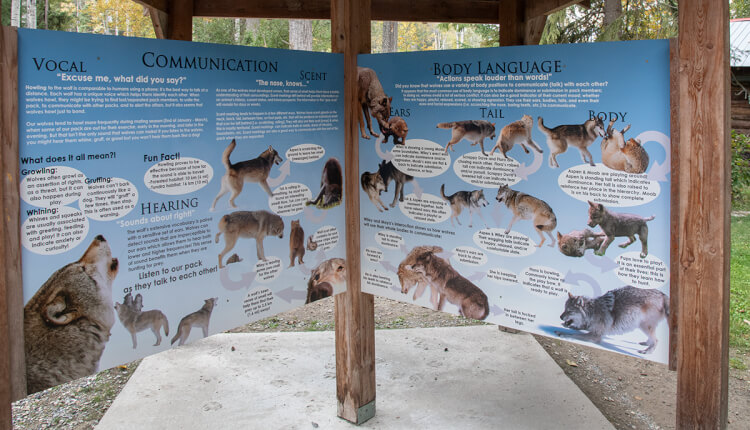
They adopted more wolves over the years, mostly from zoos and similar facilities. Only one wolf came from the wild. Someone found a sick wolf pup that had been abandoned by its pack in Alberta’s Crowsnest Pass. After a veterinarian provided medical attention, it was determined that the pup would not survive in the wild. Shelley remembers the enormous amount of paperwork involved in obtaining approval to bring that wolf to the centre. Indeed, everything to do with establishing and operating the centre was mired in government bureaucracy.
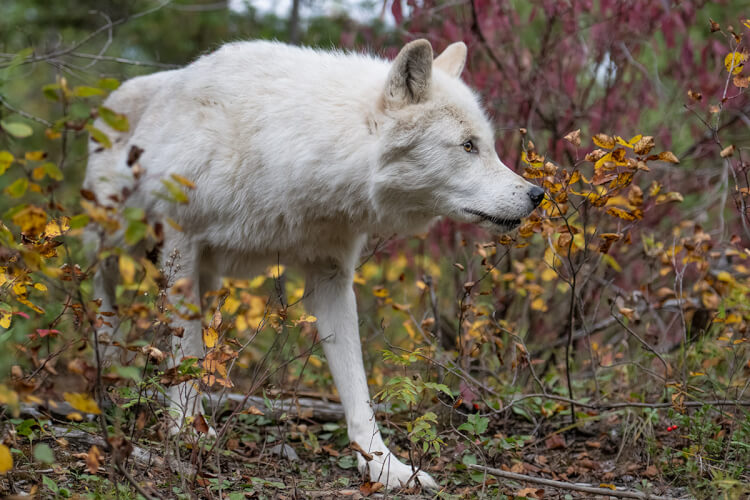
The Wolf as a Keystone Species
During a 25-minute interpretive program, staff introduce visitors to their six wolves and talk about wolf behaviour and why wolves are important. They relate cool facts about wolves. For example, they can exert a whopping 400 pounds of pressure per square inch when they bite, and need to eat about five to seven pounds of meat per day in order to remain in prime condition.
Shelley also takes her wolf education program on the road, having visited around 75 schools. She brings a wolf along, which never fails to impress the kids.
Most important is fostering an understanding of the wolf’s importance as a keystone species. When a keystone species is removed, the rest of the ecosystem can collapse. Shelley cites the case of Yellowstone National Park. By the 1920s, wolves had disappeared from Yellowstone. The elk population soon exploded, leading to overgrazing and decimation of willows, aspens, and other plants along the rivers. This had a domino effect, with wildlife such as beavers that depend on those riverside habitats fast disappearing as well.
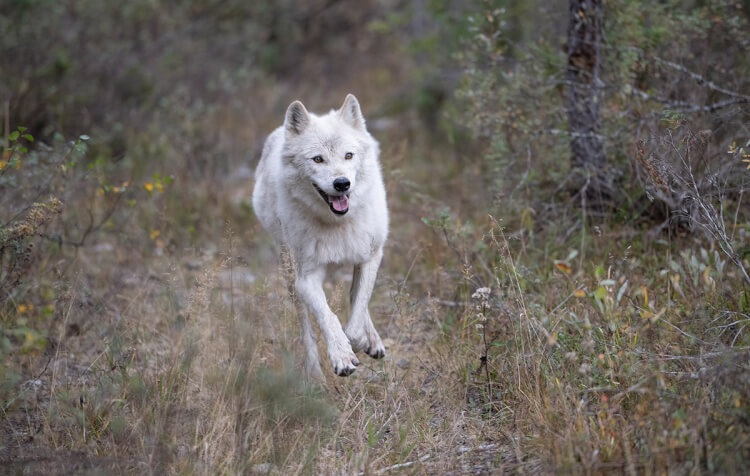
In the mid-1990s the park reintroduced wolves, obtained from western Canada. It was a controversial move with strong resistance from surrounding state governments, ranchers, and hunters who argued that they wouldn’t have enough elk to shoot.
Within a few years, the wolves began to flourish. While they kept elk numbers in check, the elk herd was not devastated as critics had feared. Rather, elk changed their behavior. With wolves around, elk could no longer settle into one spot and eat everything in sight. They had to keep looking over their shoulders and as a result, moved around a lot more. Riverside habitats and the species they support started to recover, including beavers. Yellowstone has a healthier ecosystem now than it has had in years, thanks in large part to wolves.
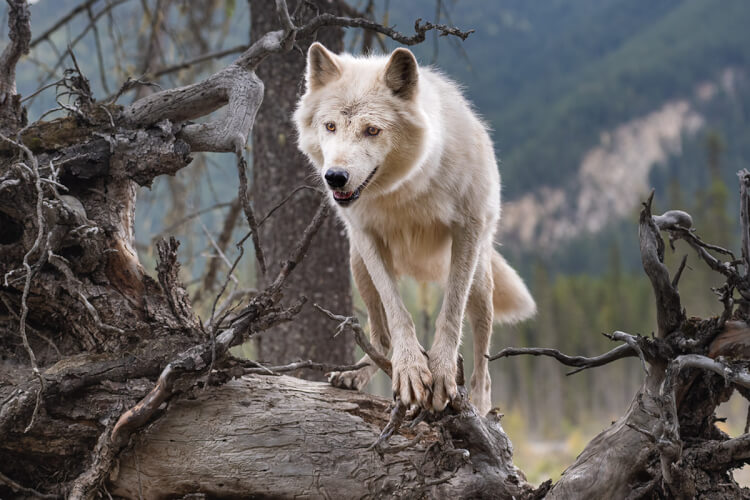
Advocating for Wolves
The centre plays a strong advocacy role, and has information on how visitors can contact government to make their views known. Shelley and her staff are highly critical of government policies towards wolves across Canada, especially the wolf cull programs in places such as Alberta and BC. The rationale for the programs is that reducing wolf numbers will help save endangered caribou herds. In Alberta, a great deal of controversy has arisen over the use of strychnine and other poisons to kill wolves. In BC, government contractors shoot wolves from helicopters.
Shelley points out that the dire situation of the caribou is due to habitat loss and disturbance rather than wolves, a view that has been substantiated by scientific studies.
“The government is under pressure regarding those caribou numbers and they want to look like they’re doing something,” Shelley argues. “It’s a lot easier and cheaper to have scapegoats, and what better scapegoat than the big bad wolf.”
Walking with a Wolf
The highlight of our visit was the Wolf Walk. Shelley led a light-coloured Grey Wolf named Flora into the back of her truck while we hopped in the front seat for the drive to a remote area in the Blaeberry Valley. We asked Shelley how unusual an experience this is.
“We’re the only people in the world that take a wolf out off-leash,” she replied.
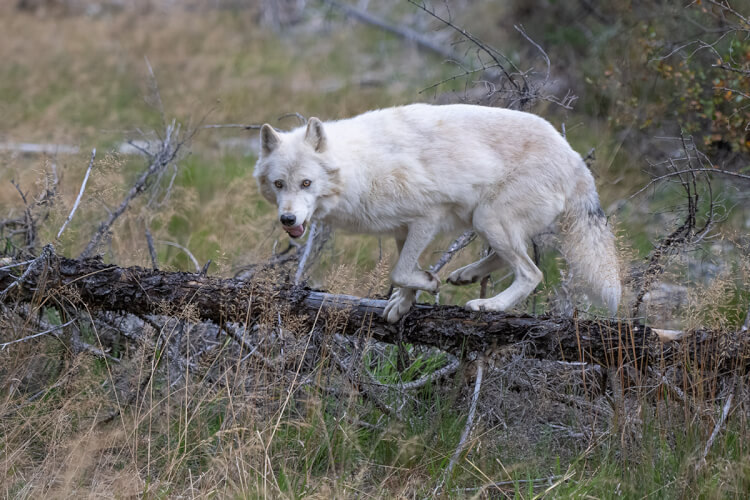
While Flora is used to people, she still has predator instincts. Before releasing the wolf, Shelley went over a few cautions. We can touch her but only after she approaches us and gets used to us. It’s not a good idea to crouch down close to the wolf since this could be considered an aggressive move.
“We are on complete wolf terms. It won’t be our choice what happens out there. It will be up to Flora.”
As Flora jumped down from the back of the truck, she immediately started nosing around bushes. It seemed similar to walking with a dog that gets distracted by birds or other animals, but with a big difference. Wolves are much more discriminating.
“Squirrels and chipmunks are a waste of time for wolves because they know they won’t catch them,” Shelley explained.
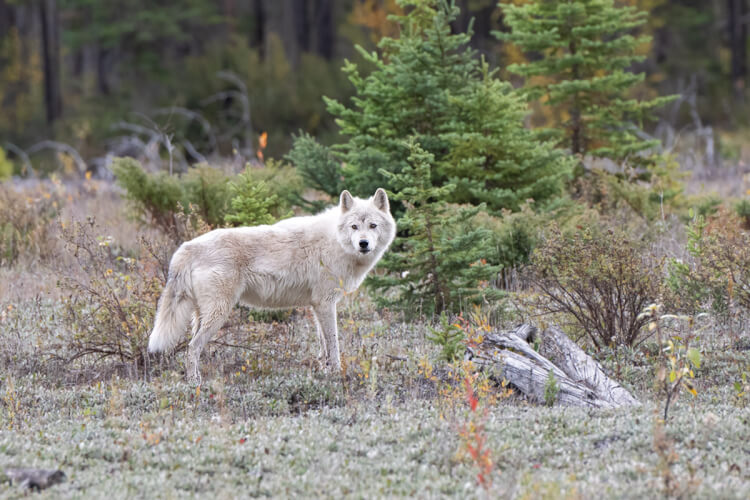
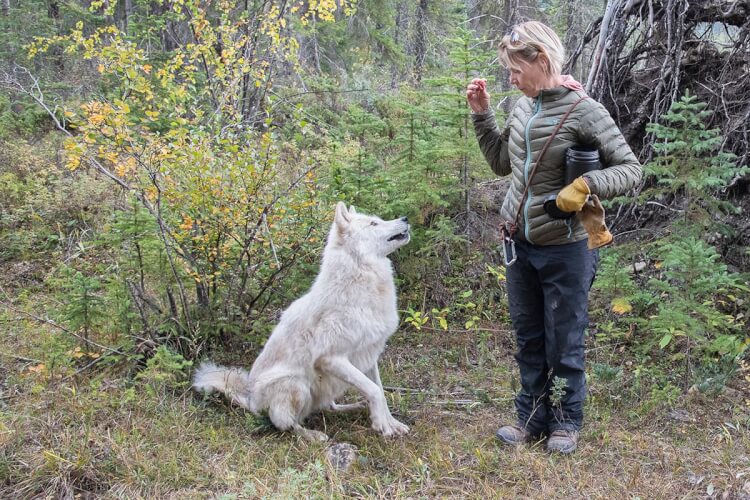
Shelley could control where we went somewhat by pulling out her can of treats to tempt Flora back if she strayed too far. But for the most part, Flora wandered wherever she saw fit, having a drink and splashing in a stream, often running and enjoying being in the open with no restrictions. For a photographer it was like being a kid turned loose in a candy store, capturing a range of wolf behaviours at close quarters in a wild setting.
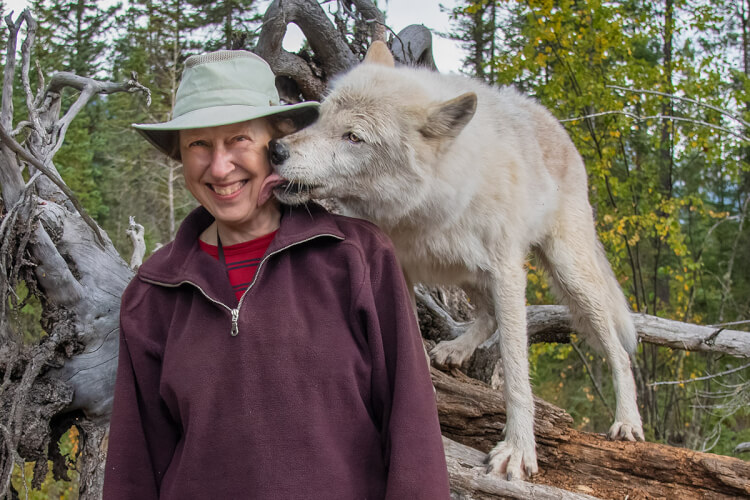
During the beginning of the walk, Flora mostly ignored us but that changed as she grew used to us. When we came to a large uprooted tree, Shelley suggested that this would be a great spot for close-up photos of ourselves with the wolf. Each of the six people in our group took turns standing in front while Flora climbed to the top of the tree root behind. Without warning, Flora would sometimes rest her front paws on people’s shoulders or stick out her long tongue and give them a juicy lick on the side of the face. Being kissed by a wolf was the ultimate sign of acceptance.
The Take-away
Some visitors are so taken with this experience that they come back again and again. Shelley said that one woman has come 12 times, and a couple from Toronto has returned every year for the last six years.
“I take a lot of autistic people out,” Shelley added. “They just lose themselves in the experience.”
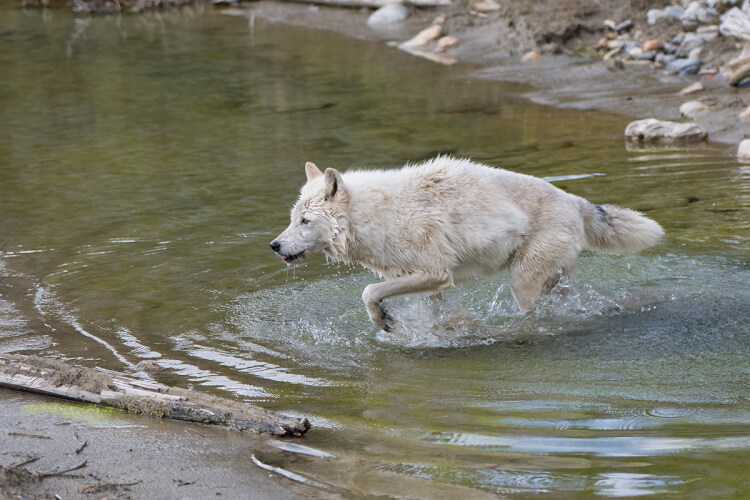
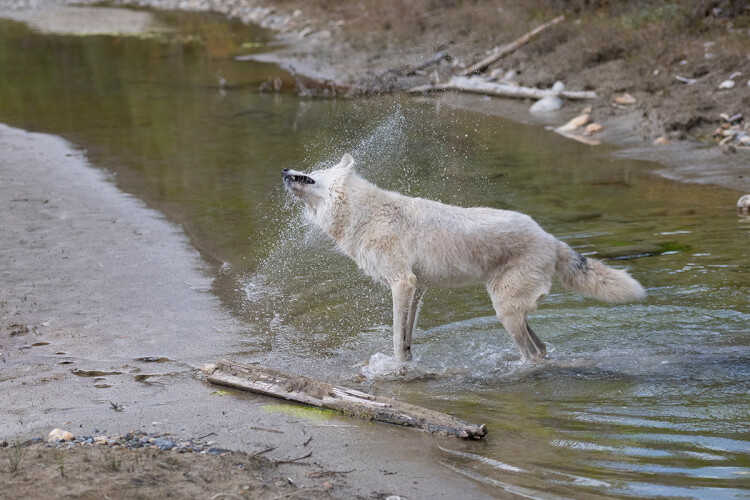
The walks almost always have a transformative effect, with participants coming away with an entirely new attitude towards wolves and their place in the world. It’s hard to imagine anyone returning from the walk advocating poisoning wolves or shooting them from a helicopter.
“Watching that light bulb come on is the most rewarding,” said Shelley, “when faces light up and people say ‘Wow, that animal is amazing.’”
While education and conservation advocacy play important roles in fostering positive change, nothing can compare with making a personal connection. As Shelley put it so succinctly, “People need experiences.”
More resources
- Northern Lights Wolf Centre is open year round. Some people prefer winter walks when the wolves’ coats are thick and luxurious. The centre carries a wide range of nature books on wolves, along with Shelley’s photographs, and souvenirs.
- To learn more about the wolf cull and wolf management, the centre suggests Wolf Awareness and the BC SPCA
- 8 Top Reasons to visit Golden BC – Other attractions and activities in and near Golden, on Photojourneys.
- See Tourism Golden for information on visiting the town and area.
SUBSCRIBE to Photojourneys below
Feel free to PIN this article on wolves and the Northern Lights Wolf Centre
